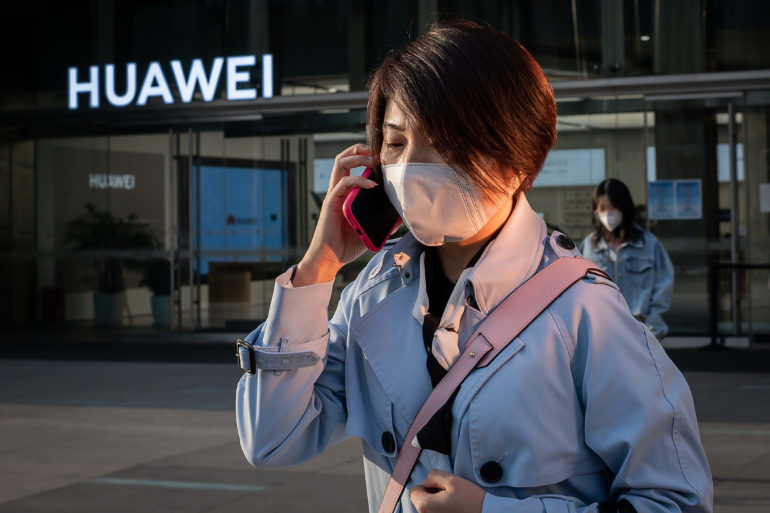HANGZHOU, China — Shipments of Huawei phones plunged in the third quarter as U.S. sanctions continue to hurt the Chinese technology giant, while domestic rival Xiaomi managed to capitalize on it, new data shows.
In the three months to the end of September, Huawei shipped 51.7 million smartphones, down 23% year-on-year, according to a Canalys report published Thursday.
Another firm, Counterpoint Research, said on Thursday that Huawei shipped 50.9 million smartphones, down 24% versus the same period last year. The Chinese firm’s market share dipped to 14% from 18% in the third quarter of 2019, according to Counterpoint.
Overall in the third quarter, worldwide smartphone shipments reached 348 million units, a 1% decline year-on-year, but a 22% rise from the second quarter, the Canalys report showed.
Huawei lost its crown as the world’s biggest smartphone maker, after gaining the title in the second quarter of the year.
Samsung overtook Huawei. The South Korean giant’s shipments totaled 80.2 million, growing 2% year-on-year, Canalys said.
The U.S. has waged a campaign against Huawei as part of the broader trade war with China. Huawei is seen as one of China’s national champions and key to the country’s ambitions in next-generation technologies like 5G, the next-generation mobile networks that offer super-fast data speeds.
Washington has placed a number of sanctions on Huawei which are continuing to take their toll. Last year, Huawei was put on a U.S. blacklist known as the Entity List. This restricted American firms from doing business with the Chinese giant. It meant that Huawei was no longer allowed to use licensed Google Android software on its smartphones.
This is not a big deal in China where Google services are effectively blocked anyway. But in international markets, which are critical to Huawei’s growth plans, consumers are used to using Google apps. Huawei’s latest flagship smartphones do not have licensed Google Android and that’s hurting the company’s device sales.
Declines in international markets are continuing for Huawei, but the company also saw a 15% fall in shipments in China in the third quarter, according to another report by IDC published Thursday.
Further uncertainty around the future of Huawei’s smartphone business remains. In May, Washington amended a rule which aimed to cut Huawei off from critical chip supplies. Taiwanese firm TSMC, which manufactures Huawei’s smartphone chips, is no longer allowed to ship those components to the company.
Xiaomi seizing Huawei shipments
Meanwhile, Chinese rival Xiaomi is picking up the slack.
“Xiaomi executed with aggression to seize shipments from Huawei,” said Mo Jia, analyst at Canalys. “There was symmetry in Q3, as Xiaomi added 14.5 million units and Huawei lost 15.1 million. In Europe, a key battleground, Huawei’s shipments fell 25%, while Xiaomi’s grew 88%.”
Xiaomi’s smartphone shipments in the quarter ending in September totaled 47.1 million, a rise of 45% year-on-year, Canalys said. It became the third-biggest smartphone player by market share for the first time, overtaking Apple which came in fourth place, and shipped 43.2 million iPhones in the same quarter.
IDC’s numbers differed slightly. The research firm’s data showed Apple shipped 41.6 million iPhones in the third quarter of 2020, down 10.6% year-on-year. IDC said the drop was expected as the next-generation iPhone 12 series was delayed.
The Cupertino giant announced the iPhone 12 range at a later-than-usual date of mid-October, with some devices not available until next month.
“Regardless, the iPhone 11 series did exceptionally well, contributing the majority of Apple’s volume, followed by the SE device,” IDC said. “Looking ahead, we expect Apple to grow in coming quarters with strong early demand for iPhone 12 paired with robust trade-in offers across major carriers, especially in the U.S.”



